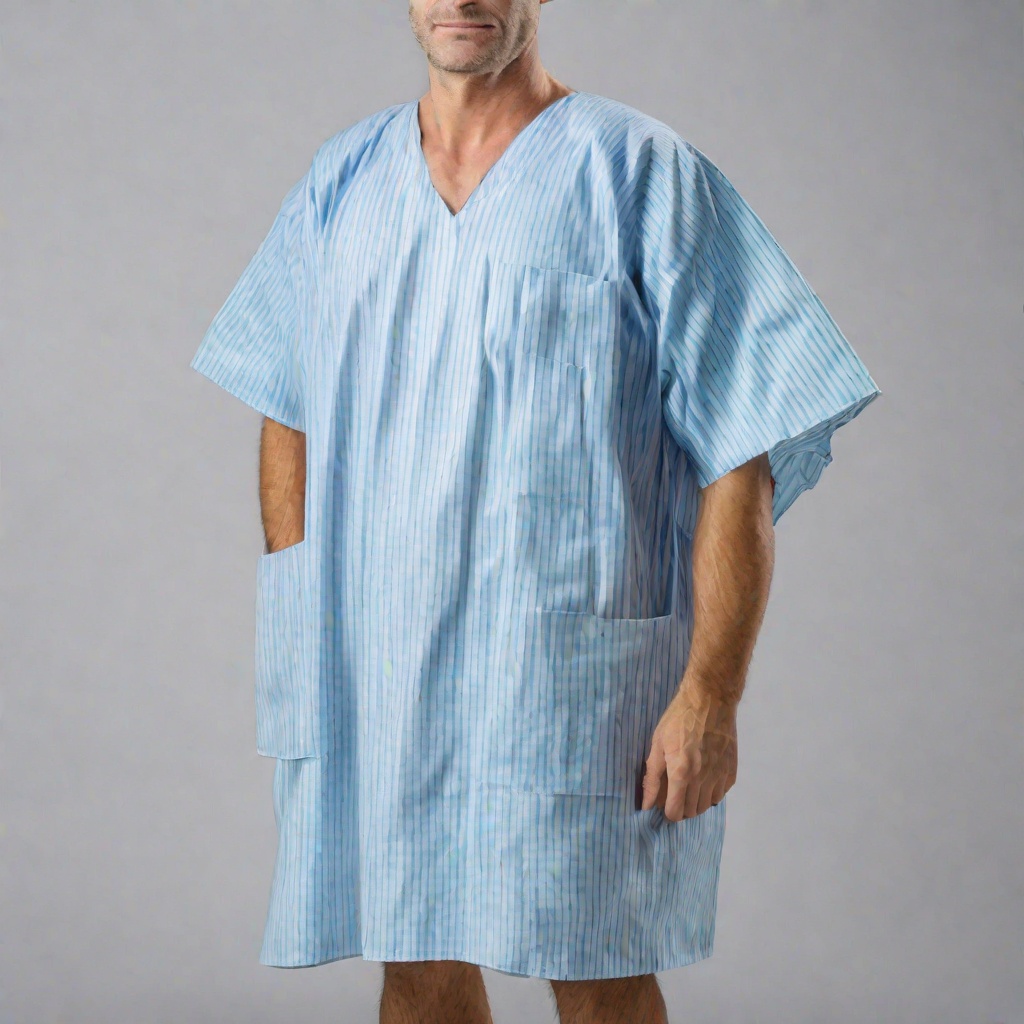In the world of healthcare, where cleanliness and hygiene are paramount, even seemingly insignificant aspects play a crucial role. One such element is the hospital gown. These simple garments may be overlooked, but they are instrumental in maintaining hygiene and infection control in healthcare facilities. In this article, we will delve into the importance of hospital patient gown and how they contribute to maintaining a safe and clean environment in hospitals.
Introduction To Hospital Patient Gown
Hospital gowns are more than just pieces of clothing for patients; they are essential tools in infection prevention and control. These gowns are specifically designed to ensure that patients and healthcare workers remain as germ-free as possible within the healthcare setting.
Infection Control
One of the primary functions of hospital patient gown is to prevent the spread of infections. Hospitals are places where various types of infections can be transmitted easily, and patient dresses act as a barrier between patients and healthcare professionals. These gowns are designed to minimize the risk of contamination by isolating patients from the surrounding environment.
Patient Comfort And Dignity
While the primary purpose of patient dresses is hygiene and infection control, they also play a role in providing comfort and dignity to patients. Hospital stays can be stressful and uncomfortable, and wearing a clean, well-fitted gown can make a significant difference in a patient’s experience. It allows them to maintain their modesty while receiving medical care.
Easy Access To Medical Procedures
Another critical function of hospital gowns is to provide easy access to medical procedures. These gowns are designed with accessibility in mind, allowing healthcare professionals to perform examinations, administer medications, or conduct surgeries without the need to fully undress the patient. This not only saves time but also minimizes patient discomfort.
Reducing Cross-Contamination
Infection control is a shared responsibility in healthcare facilities. Hospital gowns help reduce cross-contamination by limiting contact between healthcare workers and patients’ bodily fluids or other contaminants. This is particularly important in preventing the spread of highly contagious diseases.
Fabric And Material Selection
The choice of fabric and material for hospital dresses is crucial in ensuring their effectiveness in maintaining hygiene. Gowns are typically made from fabrics that are easy to clean and sanitize, such as cotton or a cotton-polyester blend. These materials can withstand frequent washing and sterilization, making them suitable for hospital use.
Adherence To Infection Control Protocols
To maintain hygiene and prevent infections, it is crucial for healthcare workers to adhere to infection control protocols, including the proper use of hospital dresses. This includes putting on and taking off gowns in a manner that minimizes the risk of contamination. Education and training are essential to ensure that healthcare professionals follow these protocols.
Environmental Impact
While the focus has been on the hygiene and infection control aspects of patient dresses, it’s also essential to consider their environmental impact. The healthcare industry is increasingly aware of the need for sustainable and eco-friendly practices. Hospitals are now exploring options for reusable gowns and sustainable materials to reduce their carbon footprint.
Patient Engagement
In some healthcare facilities, patient engagement and involvement in their care have become a priority. Patient dresses are no exception to this trend. Some hospitals are now offering patients a choice in the style and design of their gowns to make them feel more comfortable and engaged in their healthcare journey.
Conclusion
The role of hospital gowns in maintaining hygiene cannot be underestimated. They are not just clothing; they are vital tools for infection control, patient comfort, and dignity. As the healthcare industry continues to evolve, so does the importance of these gowns in ensuring a safe and clean environment in hospitals. With ongoing research and innovation, patient dresses will continue to play a pivotal role in healthcare hygiene, both now and in the future.





